iPhone SE (2022) review: a great cheap iPhone, but with limits
The iPhone SE (2022) gets some high-tech upgrades, and now offer the full iOS experience
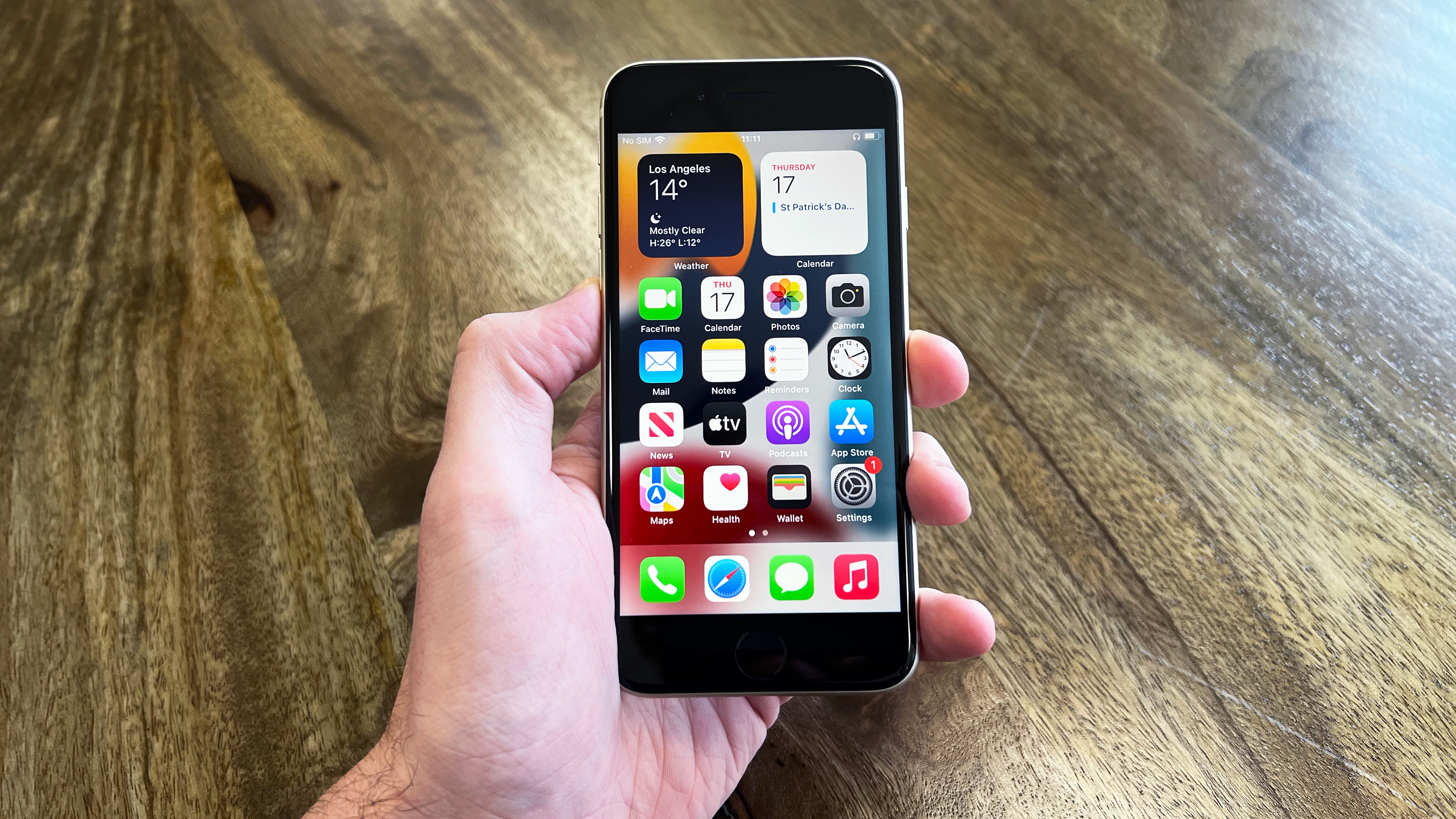
The iPhone SE (2022) continues Apple's run of delivering cutting-edge innards for a cut-price iPhone. The camera is alarmingly good in most circumstances, and the A15 chip will make sure this phone gets updates for years to come. While the small size will be welcome for many, it also means a screen that will be too small for others, and it limits the battery life. It's a great phone for those happy to live within its limits, but make no mistake that it has limits.
-
+
Very fast processor
-
+
5G connectivity
-
+
Tough, premium glass design
-
+
Very strong camera
-
-
Single rear camera & no Night mode
-
-
Older design still clinging on
-
-
Unimpressive battery life
Why you can trust T3

In this iPhone SE (2022) review, we’re looking at the latest versions of Apple cheap iPhone – but as with all the previous versions, cheap doesn’t mean that it’s full of cut-back parts.
The iPhone SE (2022) is a bit like when old-school cars get converted to electric, and can suddenly accelerate like a rocket sled. The chassis is the same design as the iPhone 8, but with the addition of the iPhone 13’s A15 processor and 5G support, this phone goes. More importantly, it’s extremely future-proof, meaning that you’re not paying a lower price for something you’ll need to upgrade from soon – the new iPhone SE is built to last, making it one of the best cheap phones for those who don't like to update too often.
Yes, there are plenty of elements that are much less advanced than the other iPhones – it’s got to be cheaper somehow – and the case of the camera features and battery life in particular, that really might push you to a more expensive iPhone model.
But as an overall package for the price – a reliable phone that should last you for a long time and that can take stunning photos from its one camera lens – the iPhone SE (2022) is a strong pick. Here’s everything you need to know.
iPhone SE (2022) review: price & release date
The iPhone SE (2022) was released on March 18th 2022.
Its SIM-free price starts from £419/$429/AU$719 for the 64GB version. That capacity should be okay for general light users, though I’d encourage anyone who plans to download lots of games or take a ton of photos to consider the 128GB version, which costs £469/$479/AU$799. It’s a pretty modest upgrade fee, and if you want the phone to last you for years, it’s another good way to ensure that it’s future-proof.
If you need even more space, the 256GB version costs £569/$579/AU$969.

iPhone SE (2022) review: features & what's new
The new iPhone SE has been updated from the previous version in five key ways: the Apple A15 processor, 5G support, haptic touch on the screen, stronger glass, and improved battery life.
We'll touch on all of those as we go through this review, but these give you a strong indicator of what to expect from this new version: refinement rather than revolution.
As usual, the point of the latest iPhone SE is to bring the full iPhone experience at a lower price – it doesn't have as many hardware features as the more expensive models, but you get the full capabilities of iOS.
Held over from the old model, you've got a good-quality 4.7-inch screen, front and rear cameras with 4K video support, Touch ID fingerprint security, wireless charging, and premium-feeling glass and aluminium design.
iPhone SE (2022) review: screen & speakers
The 4.7-inch screen on the iPhone SE (2022) is, by the standards of basically any other phone being released today, itsy-bitsy. Teeny-weeny, even. (Though I have been reviewing iPhones long enough to remember when the four-inch screen on the iPhone 5 was considered a comically large travesty…)
As someone who’s used to the 6.1-inch screen of the iPhone 13, there’s no question that it feels small at times to use. The keyboard is the main culprit – the Home screen and most other standard uses are fine in terms of being perfectly tappable, but the keyboard kept tripping me up. I’d hit the Return button instead of the space bar, and a lot of words that autocorrect couldn’t help with ended up as nonsense.
But that’s because I’m used to a bigger screen. For those coming from the original iPhone SE, or even those who’ve held onto an iPhone 5S, 6, 7 or similar, it will be perfectly natural.
Outside of the size, it’s a pretty good screen. The 1334x750 resolution is 326 pixels per inch, which makes it sharp and detailed. The 625 nits of brightness mean it's clear in daylight, while the P3 wide colour support makes it vibrant and accurate. It also supports Apple’s True Tone tech, which is great for being easy on the eyes in the evenings.
There is a quiet – and important – improvement to the screen in this version compared to the last model: support for Haptic Touch. This means you can hard press on notifications on the Lock Screen to see more useful features. It was truly bizarre that the last model lacked this, and it’s great that Apple has corrected it here.
When it comes to speakers, you get an okay package – they sound clear enough for a bit of music or podcasts around the house. It’s not hard for a cheap Bluetooth speaker to beat them, but they’ll do the job, no question.
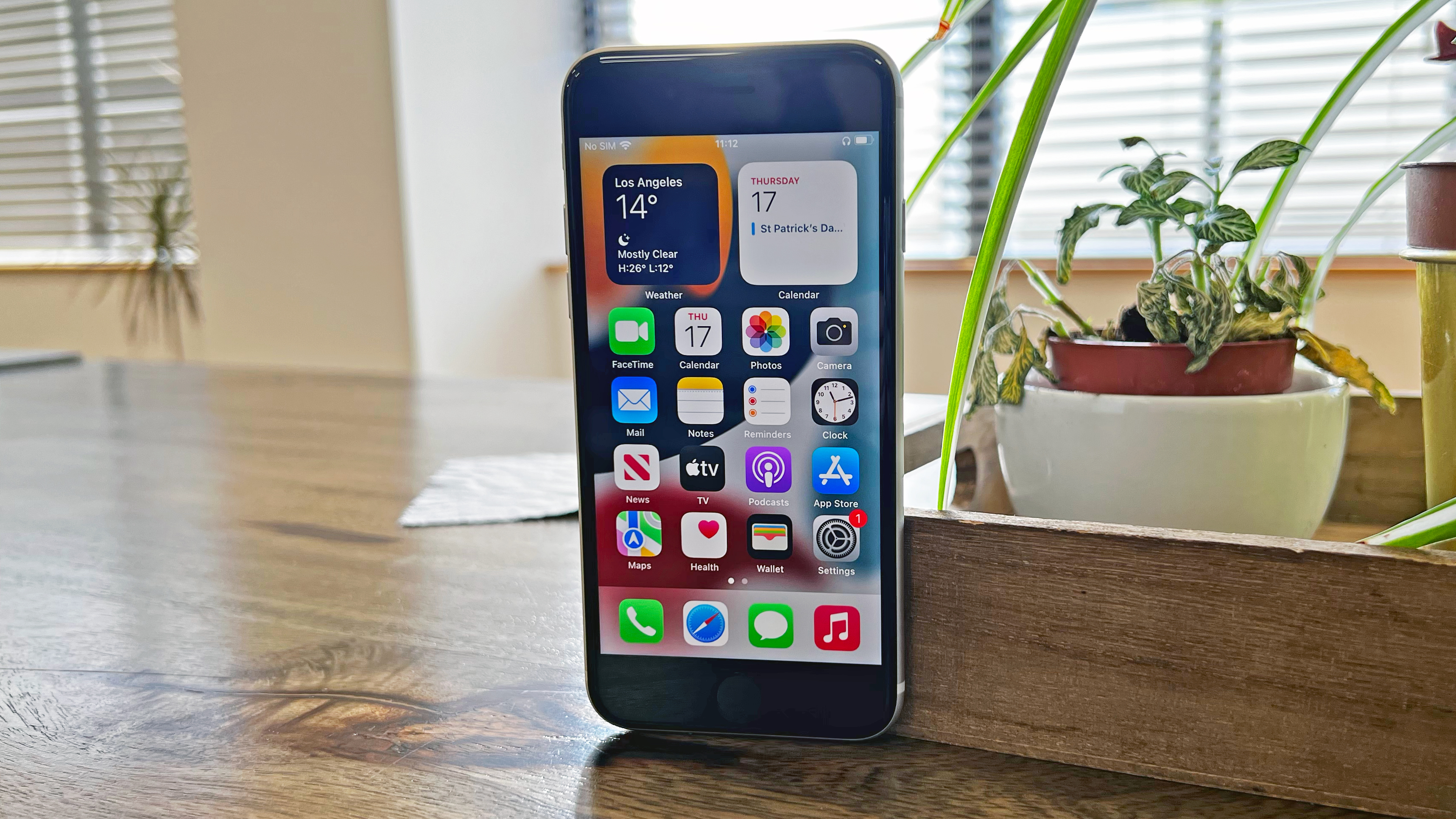
iPhone SE (2022) review:
The Apple A15 chip that powers the iPhone SE is – just as it was in the iPhone 13 – a pocket rocket. It feels somehow amusing to have such power in a device with a screen this small – the screen is a more narrow window than almost any other phone, yet you’ve got the power here to create advanced 4K video edits.
In general use, I couldn't make the processor even come close to stumbling. Everything works quickly and instantly. Which is also true of Apple’s other recent chips, but the great peace of mind you get here is the future-proofing. The A15’s six-core chip can not only handle anything you could want it to do now, but also anything Apple will ask it to do with software updates in the next few years.
Already Apple is pushing smart features with things like Live Text, where the iPhone can detect words in anything you point the camera at, or any images you view on the phone, whether photos or pics from the web. There will surely be more of this in the future, and the new iPhone SE will be able to handle it.
I tested 5G support on the UK’s Three network, and my speed test was in Bath city centre, from inside the large T3 office building – a fairly typical kind of use.
I got 670Mbps download speed, and 76 Mbps upload speed on the iPhone SE. Switching to my iPhone 13 Pro with the exact same SIM card in the exact same location, I got 898Mbps download and 82Mbps upload.
So while the iPhone SE trailed slightly behind its fancier version on the peak internet speeds, I’m not sure that anyone should be disappointed with nearly 700Mbps.
When it comes to battery, the iPhone SE (2022) lasts better than its predecessor thanks to improvements in the A15 chip, in iOS and battery tech… but it’s still a small phone with a small battery, and it shows.
From Apple’s own figures, you get 30% to 50% more life from the iPhone 13 compared to the iPhone SE (depending on type of use). And that was reflected in my own experience. The iPhone 13 and iPhone 13 Pro have really ended the issues of iPhones not lasting a full day of intensive use, but I've needed to top up towards the end of the day, and I think that'll be common among the more hardcore users. But it's probably not the hardcore people who buy the iPhone SE.
When you need to charge, you can use the Lightning connector (it comes with a USB-C to Lightning cable, and no plug adapter, as is usual now), or Qi wireless charging at up to 7.5W. Apple's MagSafe tech for higher-speed wireless charging isn't supported.
iPhone SE (2022) review: cameras
Let's get the iPhone SE's big issue out of the way when it comes to the camera: it has just a single wide-angle rear camera, with no ultra-wide or telephoto (or both) second lens.
This means you miss out on the flexibility of different zoom/length options when taking shots, but also it means that Night mode, which requires two lenses, doesn't work.
I think the iPhone SE just about gets away with it, because the camera quality is overall excellent, but I really hope Apple addresses it in whatever version comes next, because other cheap phones will give you a suite of camera lenses these days.
And if it drives you to pick up another phone instead, since the camera is such an important feature for so many people, then… well, fair enough.
But let's be clear that you're still getting a camera capable of some gorgeous shots here, especially in ample light. Apple hasn't changed the camera hardware in this version in any meaningful way, but the A15 chip delivers Apple's latest and greatest image processing, so the phone is making even more of what the sensor can do.
When I say the results are good, I don't just mean 'for a cheap phone'. I mean that in good light, they hold up well against even the iPhone 13 Pro. So well, that this is the comparison I'm using for the shots below, even though it's the cheapest iPhone against the most expensive.
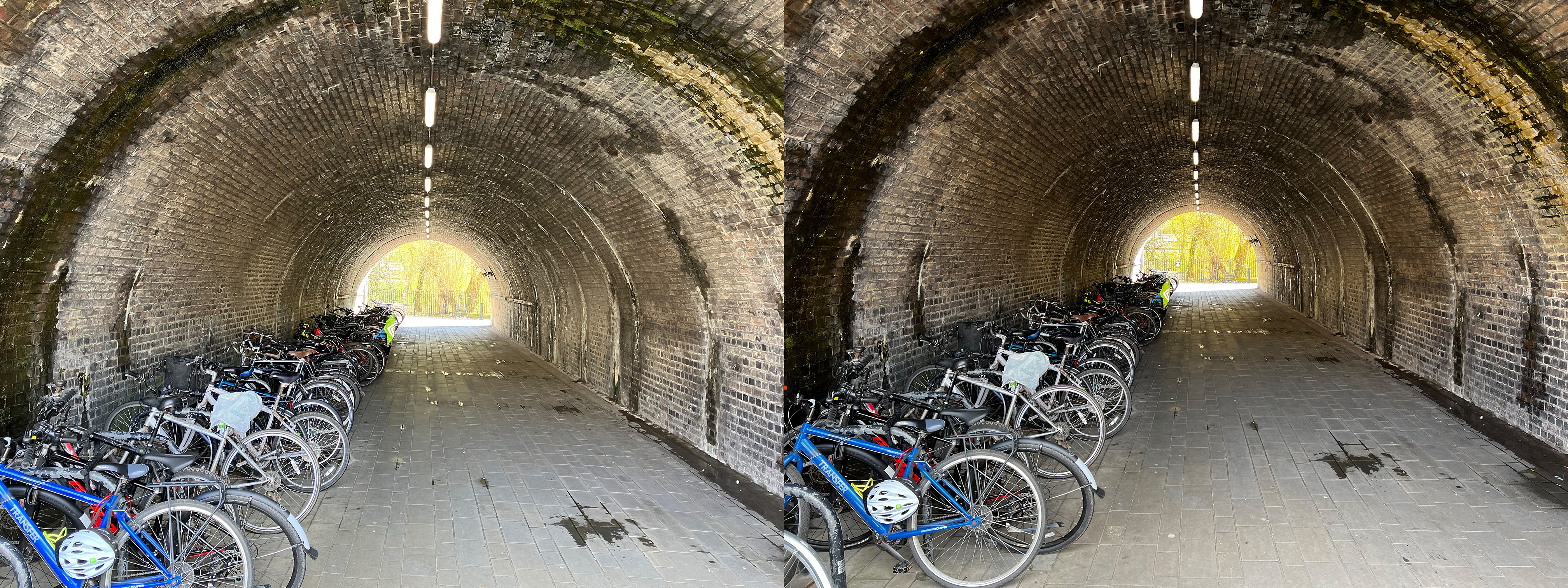
Left: iPhone SE (2022). Right: iPhone 13 Pro. Click here for large version.
What you'll notice in this shot, and it's a theme in the following few images, is that the iPhone 13 Pro's better hardware means it can capture a greater dynamic range. So you get richer shadows, and a bigger difference between the darkest and lightest parts of the image. Both phones use Apple's Smart HDR 4 contrast enhancement tech, so it's just about what the hardware is able to actually pick up well. The colours are also a little more washed out on the iPhone SE, probably again due its inability to capture as much light.
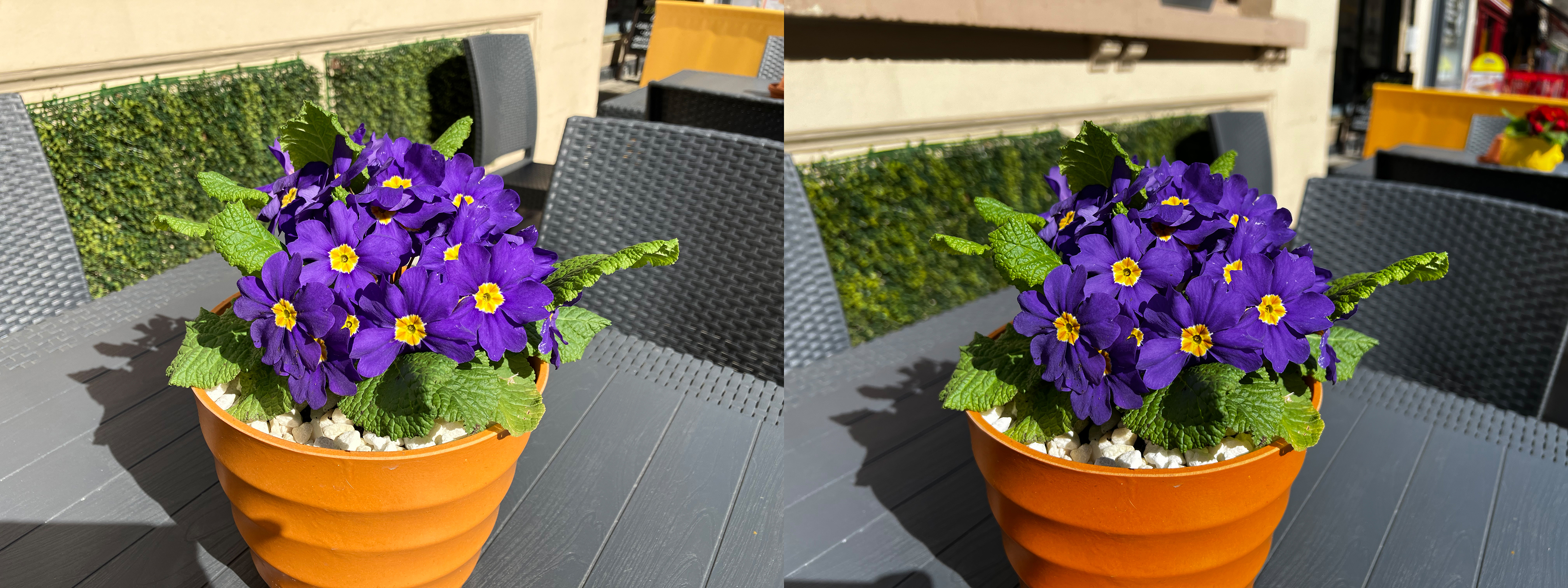
Left: iPhone SE (2022). Right: iPhone 13 Pro. Click here for large version.
The iPhone SE picks up effectively just as much detail in the flowers in this shot as the iPhone 13 Pro – the iPhone 13 Pro again delivers deeper colours and more dramatic shadows again, which add the impression of more definition. You also get a nicer bokeh from the iPhone 13 Pro, due to its larger sensor (these are not Portrait mode shots – that's just natural depth of field). I think some people might actually prefer the iPhone SE's lighter presentation in this pic.

Left: iPhone SE (2022). Right: iPhone 13 Pro. Click here for large version.
Here's a shot in Portrait mode, in pretty standard indoor lighting during the day. Again, the iPhone SE is just a little flatter, but the edge detection on the subject and the overall level of sharpness and detail is right up there with the iPhone 13 Pro.
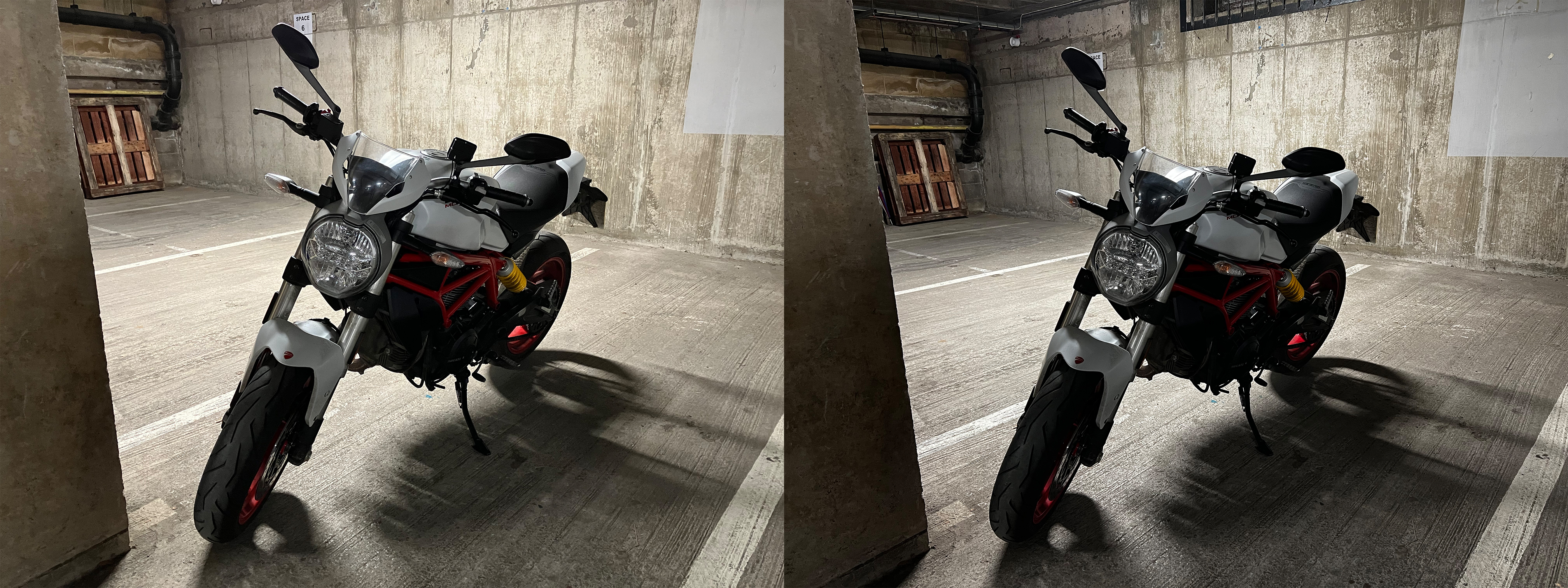
Left: iPhone SE (2022). Right: iPhone 13 Pro. Click here for large version.
Now we head to a basement, for some low-light testing. On the wall in the background, the iPhone 13 Pro is able to provide a lot more texture… but again, the slightly lighter output of the iPhone SE is arguably preferable, since it makes the shadowy side of the bike more visible.
Even more importantly, though, the bike is just as detailed on the iPhone SE shots, and there's no greater amount of noise on the more block colour areas of it. It's done an excellent job.
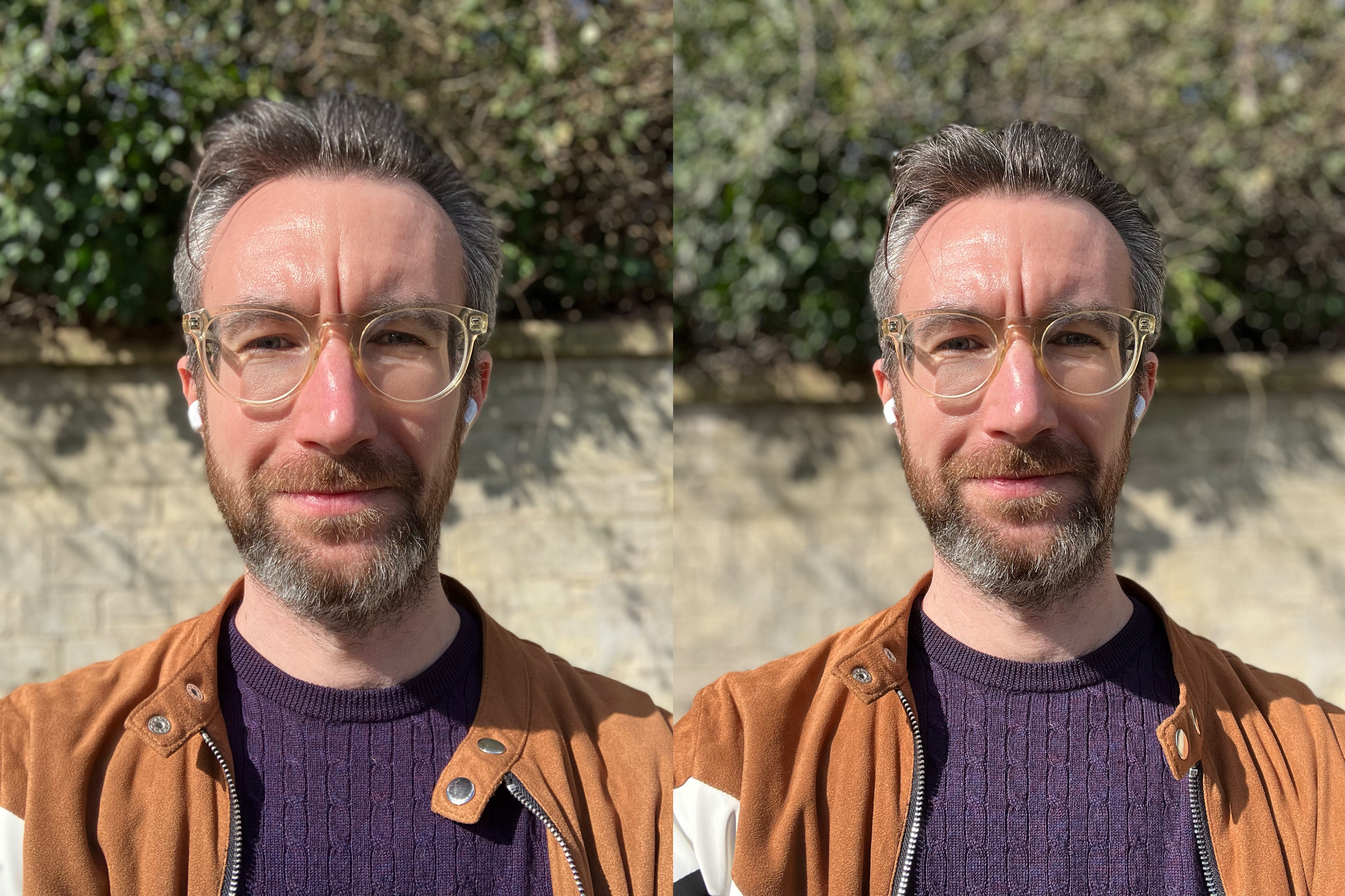
Left: iPhone SE (2022). Right: iPhone 13 Pro. Click here for large version.
Let's switch to the front camera! This is a Portrait mode shot, and if I didn't already tell you, you'd be very hard pressed to say which camera is which here, despite the iPhone 13 Pro having the advantage of a 3D sensor. The telltale sign is the hair, which is kept in better definition at the front on the iPhone 13 Pro, probably because it's able to judge the 3D depth more accurately. On the iPhone SE, the hair is blurrier. But that's not really a flaw – it's more just a different approach. The iPhone 13 Pro again has a slight edge on contrast here, but it's only really visible on the jumper, which has a brighter sheen on the Pro. Really, I'd say there's no difference here that most people would care about.
So that's the verdict here – the iPhone SE's camera can get into the ring with the iPhone 13 Pro and come out with only a loss on points, all things being equal.
Of course, as I mentioned earlier, all things are not equal. There's no Night mode and no other lenses, so what the iPhone SE struggles with isn't the quality of the shots it can take… it's that there are shots it literally cannot get.
With video, there's a bit more of a difference, because you don't get the Dolby Vision HDR recording that the higher-end iPhones offer, nor the Cinematic Mode. But the overall quality is high, and you do get fantastic stabilisation, so it looks smooth even if your hands were wobbling.
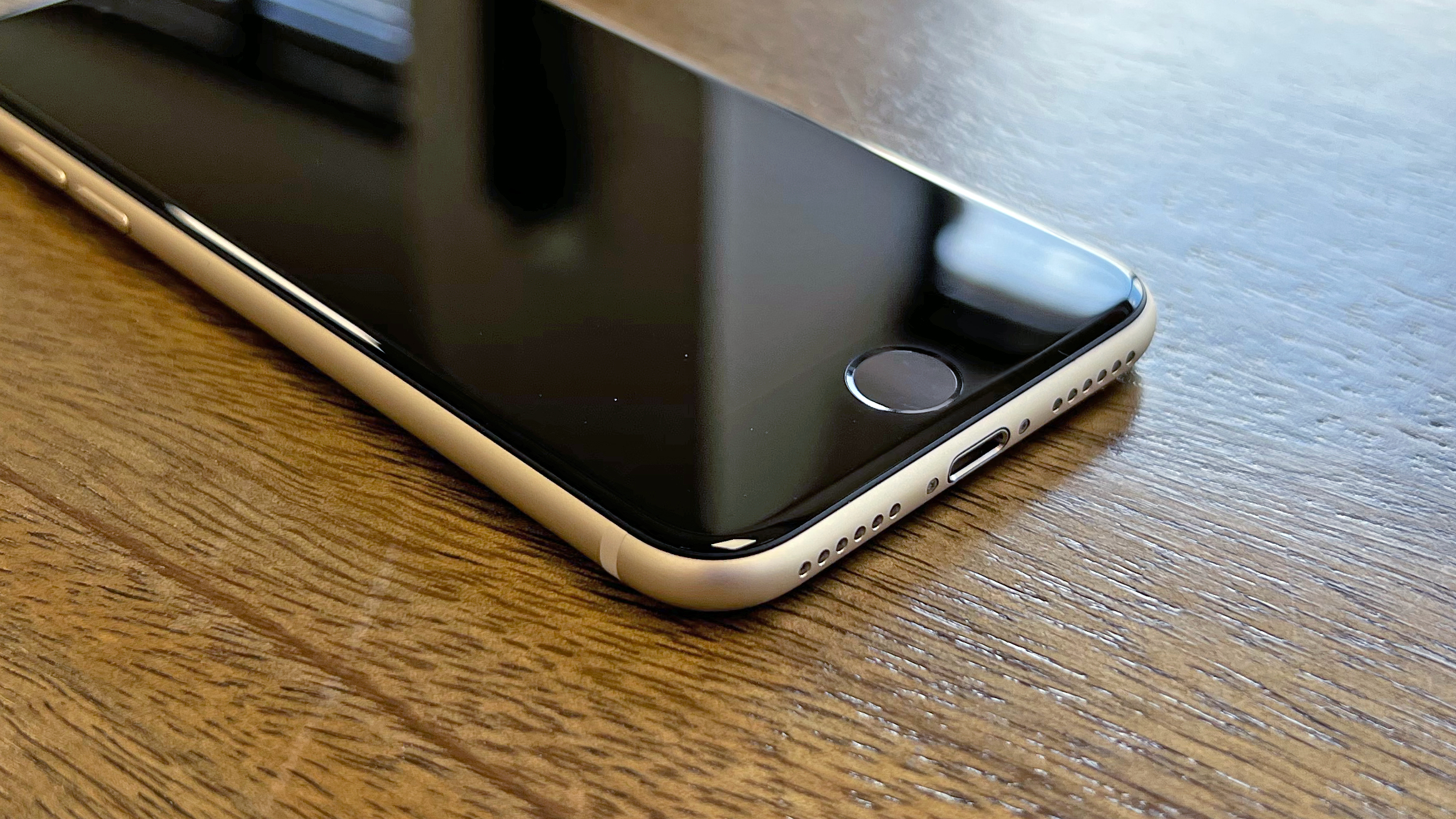
iPhone SE (2022) review: design
Visually, the only difference between the new iPhone SE and the old one is colours. The new Midnight shade has a dark aluminium frame with a slightly blue tint to its blackness, with a glossy black glass rear. The Starlight aluminium frame (which is what I've tested) has a hint of gold to its silver, and has a glossy white back. The (PRODUCT)RED is red frame and glossy red back, naturally.
All have a black glass front, and though the design does have the air of being five years old (particularly when the screen is on and you can see the big chin and forehead), it's finished so tastefully and with such premium build quality that it doesn't matter much.
Despite looking the same as the previous model, the glass is new. It's the same glass you get on the back of the iPhone 13 and iPhone 13 Pro, and Apple's says it's the toughest yet for protection against breakage when it's dropped… except it's not as tough as the Ceramic Shield material used on the front of the iPhone 13 models.
So while the iPhone SE should take drops better than the last version, a case is still wise.
Fingerprints also stand out on the glass far more than my iPhone 13, I found myself feeling the need to jumper far more than the 13. Thankfully, this works very well.
The most important thing about the design, though. With dimensions of 67.3x138.4x7.3mm (2.65x5.45x0.29 inches), it's smaller than the iPhone 13 in width, height and thinness. None of these is a huge reduction in size individually, but together they make something that is a million times easier to manipulate and type on in one hand.
iPhone SE (2022) review: verdict
The new iPhone SE is a phone that excels in all the areas Apple has put the love into, but once you hit its limits, you hit them hard. The screen offers accurate colours and good visibility, but the small size means there's nowhere to go if you start using a more complex app that feels cramped. The camera is excellent in all the conditions we tested, but lacks features that might help you get a shot outside of ideal circumstances. The battery life is fine for lighter use, but if you get more intensive over time it won't keep up with you as you do.
But if you're happy that you won't exceed these limits, then it's a really strong choice, especially with the A15 chip ensuring that you'll have enough power for any new iOS feature Apple wants to add in the future. It's a full-fat iPhone experience, with a lighter price.
iPhone SE (2022) review: also consider
The iPhone 11 is the biggest competitor from Apple's line-up. We've got a whole iPhone SE (2022) vs iPhone 11 guide if you want to get into every little difference, but is basically comes down to: if the screen, battery life and camera are most important, get the iPhone 11. If cheapness, small size and future-proofing are more important, get the iPhone SE.
From Android, you should consider the Samsung Galaxy A53 5G, which is a very similar price, also from a big name that makes reliable products. It's got a lot of specs to beat the iPhone SE, though, including an edge-to-edge OLED screen, 128GB of storage as standard, and a multi-lens camera system. However, it has a 6.5-inch screen, so if it's the small size of the iPhone SE you like, the A53 is not your friend.
Sign up to the T3 newsletter for smarter living straight to your inbox
Get all the latest news, reviews, deals and buying guides on gorgeous tech, home and active products from the T3 experts
Matt is T3's former AV and Smart Home Editor (UK), master of all things audiovisual, overseeing our TV, speakers and headphones coverage. He also covered smart home products and large appliances, as well as our toys and games articles. He's can explain both what Dolby Vision IQ is and why the Lego you're building doesn't fit together the way the instructions say, so is truly invaluable. Matt has worked for tech publications for over 10 years, in print and online, including running T3's print magazine and launching its most recent redesign. He's also contributed to a huge number of tech and gaming titles over the years. Say hello if you see him roaming the halls at CES, IFA or Toy Fair. Matt now works for our sister title TechRadar.
-
 Leaked AirPods prototype looks like Nothing... literally
Leaked AirPods prototype looks like Nothing... literallyAnd we are here for them
By Britta O'Boyle Published
-
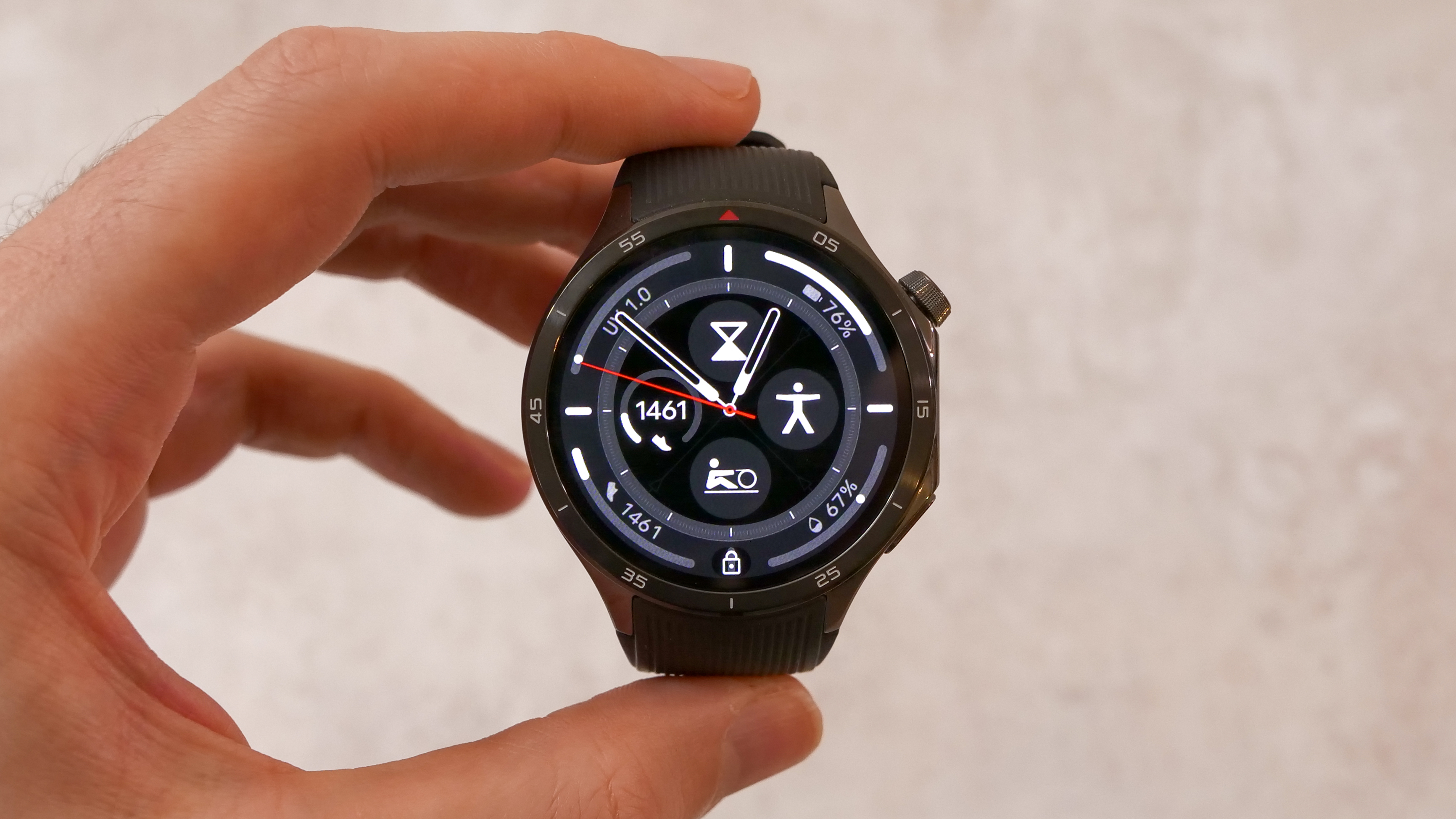 OnePlus Watch 3 lands in the UK with a flurry of freebies and a huge discount
OnePlus Watch 3 lands in the UK with a flurry of freebies and a huge discountThe new titanium-clad smartwatch brings 120-hour battery life, ECG health checks, and some serious launch offers
By Matt Kollat Published
-
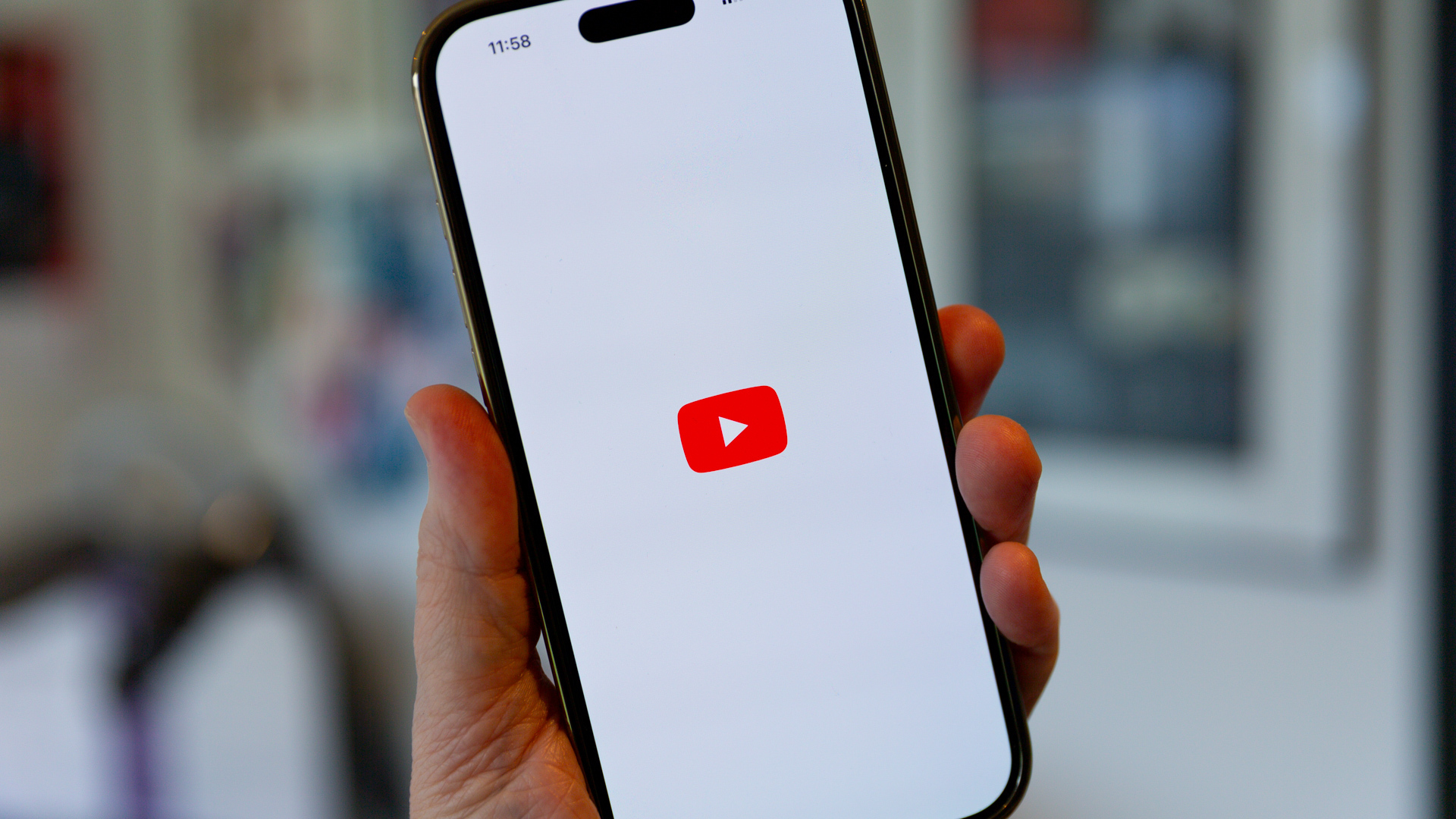 Future YouTube feature could put an end to your doomscrolling
Future YouTube feature could put an end to your doomscrollingAnd that's something we would love to see
By Britta O'Boyle Published